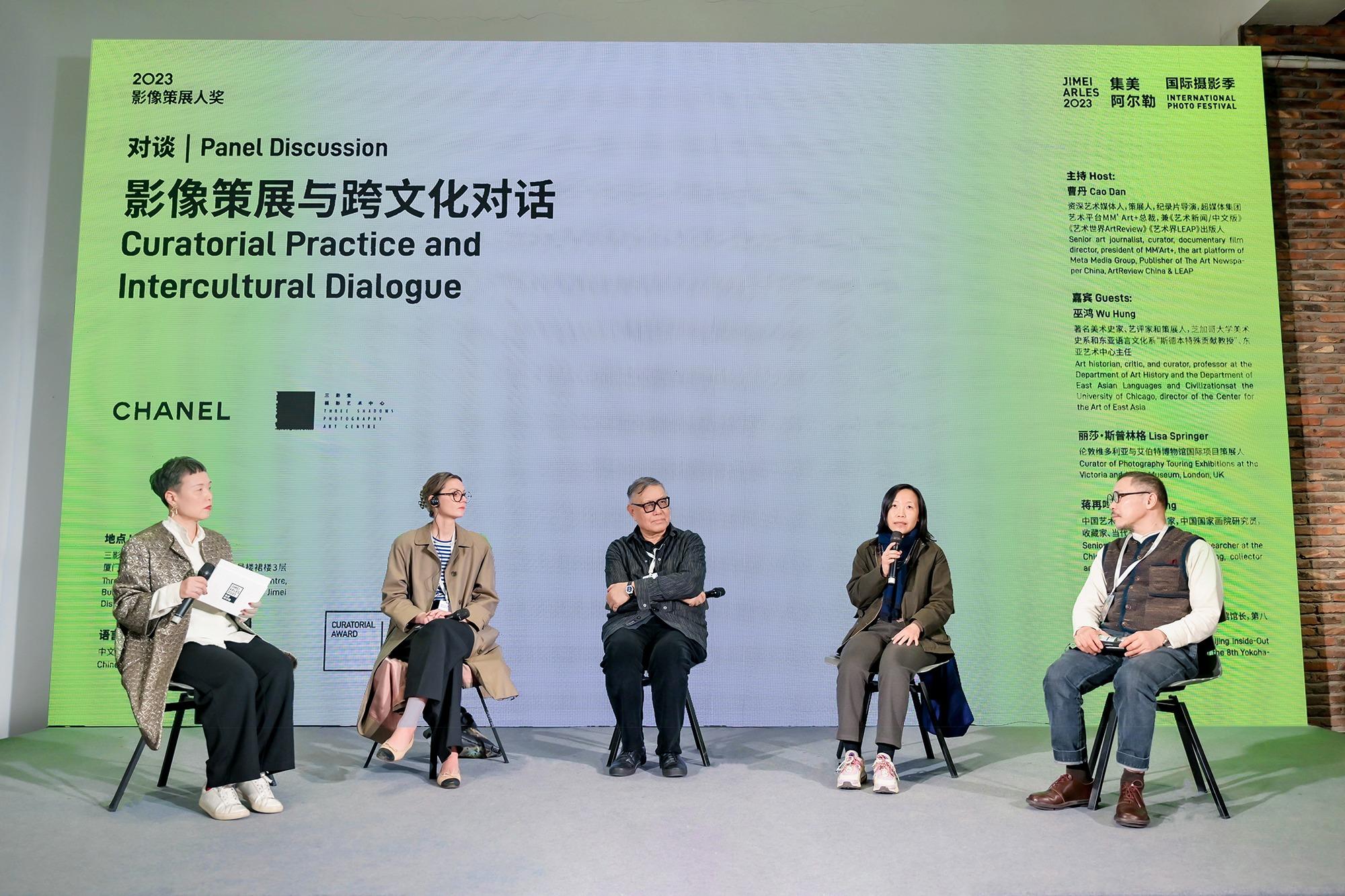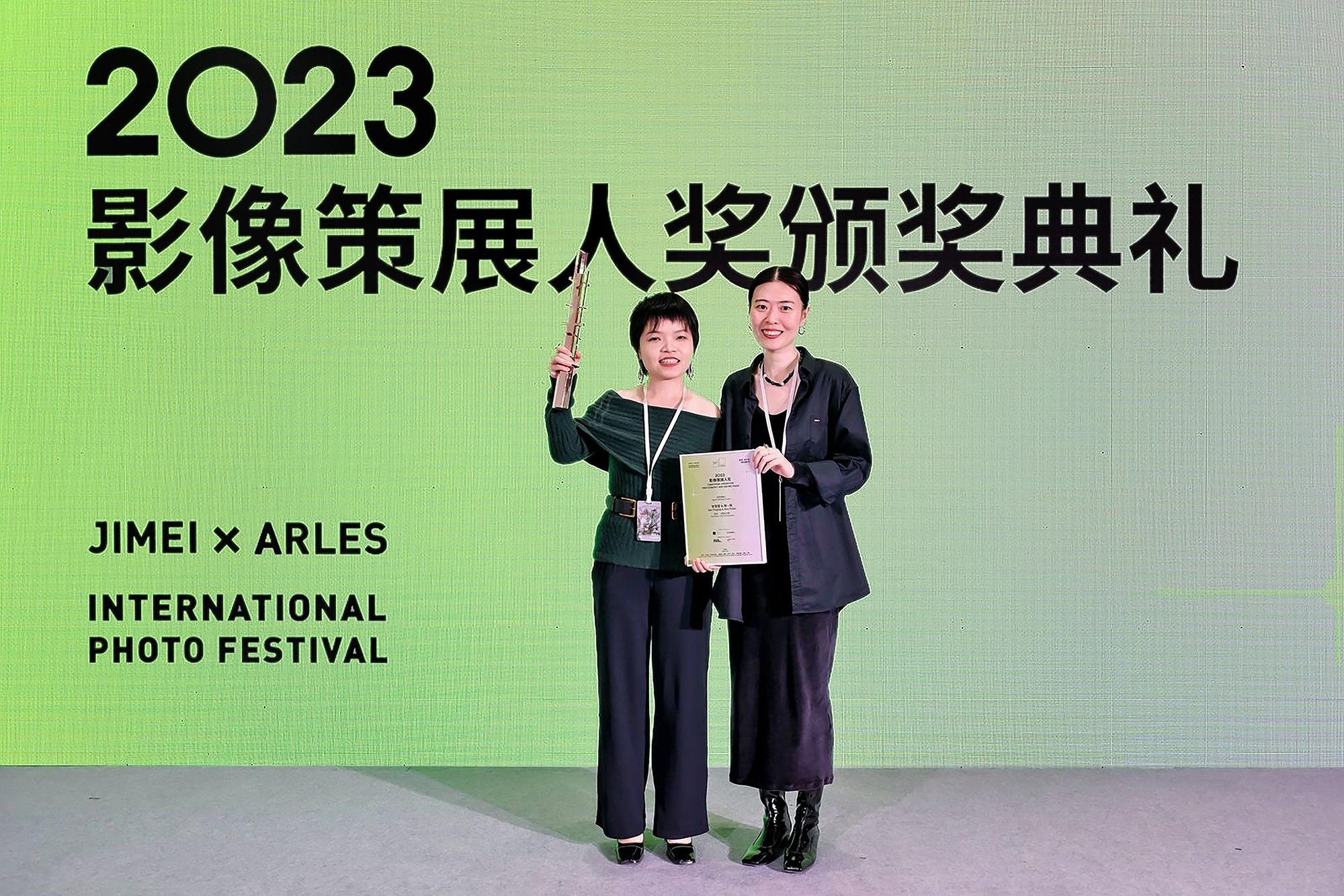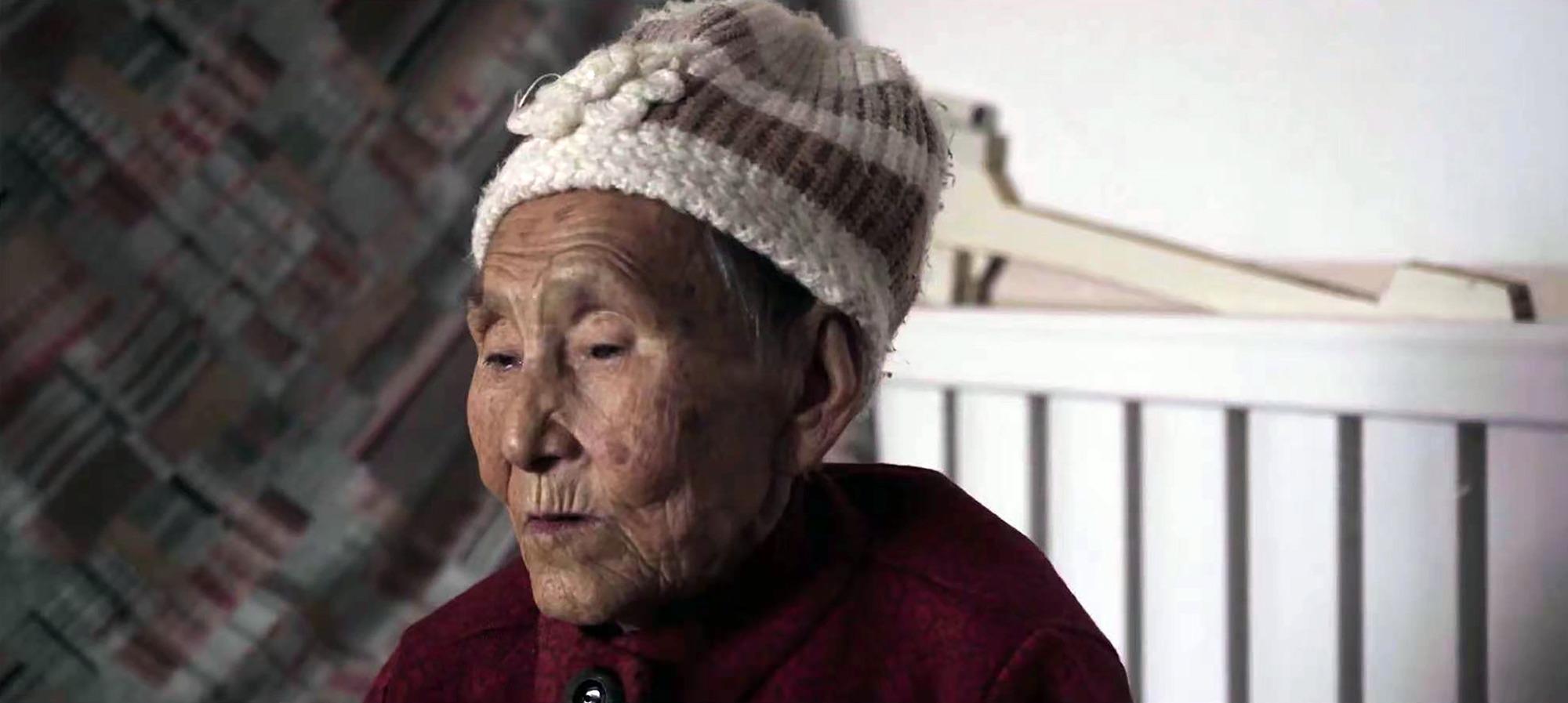An award goes beyond recognizing photographers to honoring the work of the people who organize exhibitions, Yang Xiaoyu reports.
 A panel discussion on Curatorial Practice and Intercultural Dialogue is held during the opening week of the ninth Jimei x Arles International Photo Festival in Xiamen, East China's Fujian province, on Dec 16, 2023. (PROVIDED TO CHINA DAILY)
A panel discussion on Curatorial Practice and Intercultural Dialogue is held during the opening week of the ninth Jimei x Arles International Photo Festival in Xiamen, East China's Fujian province, on Dec 16, 2023. (PROVIDED TO CHINA DAILY)
While many awards recognize and support outstanding photographers in China, there are very few that celebrate curators, who are also instrumental in researching and bringing themed exhibitions of photography and moving images to the public, whether in physical or virtual spaces.
So, aspiring young curators, especially those working with lens-based art, rejoiced when the prestigious Jimei x Arles International Photo Festival set up the Curatorial Award for Photography and Moving Image in 2021.
Co-initiated in 2015 by the Three Shadows Photography Art Centre, one of the first contemporary art spaces dedicated exclusively to photography in China, and the Rencontres d'Arles, which is often called the "Cannes Film Festival of the photography world", the annual festival has grown into an essential fixture on China's photography scene. It has organized hundreds of exhibitions that showcase the latest work of local and international artists.
The curatorial award claims to be the first of its kind in China. It's a collaboration between the art center, based in both Beijing, and Xiamen, Fujian province, and the French fashion house, Chanel.
READ MORE: Photo week frames culture in the big picture
"We set up the award in the hopes of encouraging more talented curators to pay attention to photography and moving-image art, to gradually improve the ecosystem of photography and moving-image art," says Rong Rong (the penname of Lu Zhirong), co-founder of Three Shadows and of Jimei x Arles.
Rong Rong, who's also an established photographer, laments the lack of exceptional curators working in photography and moving-image art, and says this has led to a deficiency in academic research and criticism of these mediums. This means lens-based art, which is a relatively young art form, is relevantly less valued than other mediums, such as painting and sculpture, he says.
 The creative duo of Gan Yingying (left) and Zhou Yichen after receiving the curatorial award for photography and moving image. (PROVIDED TO CHINA DAILY)
The creative duo of Gan Yingying (left) and Zhou Yichen after receiving the curatorial award for photography and moving image. (PROVIDED TO CHINA DAILY)
Imagining imagery
Rong Rong says excellent curators, with extensive theoretical knowledge and a discerning eye for talent, act as a bridge connecting artists with the public. They catalyze the rise of artists with their research-backed curations.
Over the last three years, 150 young curators and curatorial teams have jostled for the award, according to the organizers.
The creative duo, Gan Yingying and Zhou Yichen, picked up the third Curatorial Award for Photography and Moving Image for their project, The Via Combusta, at the festival's ninth edition, which wrapped up on Jan 21.
In addition to receiving a cash prize of 100,000 yuan ($14,100), the pair will receive sponsorship to turn their winning project into two exhibitions at Shanghai's Fotografiska and Beijing's Three Shadows, and go on a mentorship and exchange program in Europe this year.
Curators must submit a proposal outlining the theme, concept, budget, artworks and public education programs for their projects. An academic committee composed of experienced art historians, critics and curators vets the proposals and selects 10 projects for further consideration. The creators of the long-listed projects then meet with a five-member jury, which shortlists five projects for the award. The finalists' projects are exhibited together at the festival, and undergo final judgment by an international jury.
"The finalists' exhibition serves as an arena for testing the imagination and concepts of new curatorial talent. Their well-prepared curatorial projects are pointed and cutting-edge in their thematic focuses, and are valuable case studies on how to enhance the academic aspect of photography," says Gu Zheng, who is a curator, art critic and member of the Jimei x Arles art committee.
 The Via Combusta features Pyramids and Parabolas II, a video installation created in 2021 by Wang Ninghui. (PROVIDED TO CHINA DAILY)
The Via Combusta features Pyramids and Parabolas II, a video installation created in 2021 by Wang Ninghui. (PROVIDED TO CHINA DAILY)
The jury commended Gan's and Zhou's research process, serious approach and creative exhibition layout.
Both hold a master's degree in photography from Western universities and are known for their performance-based photos. They describe their forays into curation as an organic and spontaneous evolution through years of involvement with their artistic communities.
The duo are based in Shanghai and Beijing, respectively. Gan works closely with members of Bujism, an artist platform that she co-founded in the ancient town of Zhujiajiao in suburban Shanghai. Zhou associates with creatives of MiA Collective Art, a platform she co-founded where artists collaborate on curated themes.
"We are both keen on doing things for our communities and are busy organizing collaborative projects, interviewing artists, writing articles to promote them and putting on shows, which have gradually made us curators," Gan says.
They say that although they were not trained in curatorial studies, they went about their projects as if they were creating art.
 The Via Combusta features Map of Shaman, a video installation created by Gu Tao in 2023. (PROVIDED TO CHINA DAILY)
The Via Combusta features Map of Shaman, a video installation created by Gu Tao in 2023. (PROVIDED TO CHINA DAILY)
Managing messaging
Compared to artists, curators must handle so much more work, including sometimes trivial details. These include researching subject matter, pitching curatorial proposals and drawing up budgets, in addition to finding suitable materials for presenting exhibition labels, according to the awardees.
"The biggest challenge about being a curator lies in communication," Zhou says. "When I work as an artist, I probably don't need to explain what I do to others. But as a curator, I have the responsibility to explain what I do to various stakeholders, including artists, art institutions, space designers, media and audiences, and to make sure I explain it clearly."
Aside from communication skills, the awardees say a curator needs solid academic research abilities, be able to raise thought-provoking questions, and read the exhibition space well to display art in an appealing and compelling manner. They also must have a can-do attitude when it comes to solving problems and organizing engaging public education programs, among many other skills.
"Participating in the competition is definitely good training for young curators, as it teaches them the entire process of curating an art exhibition through practice," says the award's first recipient, Jiang Feiran. "It offers emerging curators a great opportunity to test their mettle, and the awardees can get strong support for their future career development."
Jiang, who was a photographer pursuing her PhD in curatorial studies at the China Academy of Art in Hangzhou, Zhejiang province, at the time, won the award for her curatorial project, Unnamed River.
"Winning the curatorial award marked a formal debut for me as a curator ... which is critical to my career advancement," says Jiang, who is currently a researcher at the academy's Institute of Contemporary Art and Social Thought.
"The whole experience not only enabled me to meet like-minded creatives for future collaboration, but also helped me build contacts with art institutions, artists, critics and media."
ALSO READ: Swedish photo museum lifts shutters on first Asian outpost
Gan and Zhou also appreciate the opportunity to take master classes given by renowned international curators Wu Hung, Fumio Nanjo, Sergio Valenzuela Escobedo and Taous Dahmani, which Three Shadows organized for all contestants in 2023.
"I found the master class by Wu Hung very helpful and valuable because the veteran curator shared how he approached research-based exhibitions step by step based on longtime practice," Zhou says.
The celebrated art historian and curator participated in a panel discussion on curatorial practice and intercultural dialogue during the photo festival last December. He compared the role of a curator to that of a film director and praised the award, saying that it will help the public recognize the importance and originality of the work of curators.
Wu emphasizes the importance of curators in facilitating dialogue among artists, stimulating creativity and advancing the development of art. He also suggests that artists should be part of the judging panel to evaluate the impact of curatorial projects involving the exchange and improvement of art.
Contact the writer at yangxiaoyu@chinadaily.com.cn


